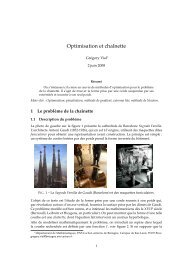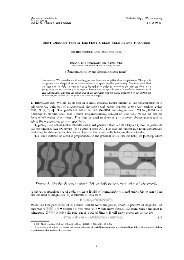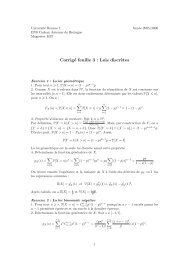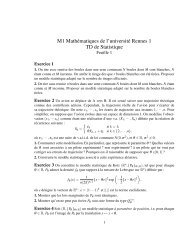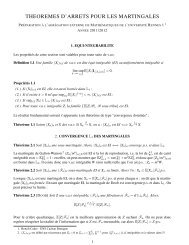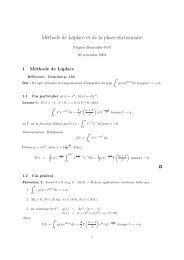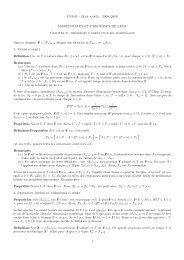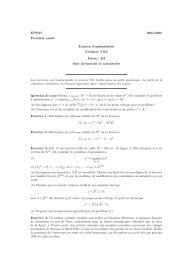Chapitre 5 Classification des statistiques - ENS de Cachan ...
Chapitre 5 Classification des statistiques - ENS de Cachan ...
Chapitre 5 Classification des statistiques - ENS de Cachan ...
You also want an ePaper? Increase the reach of your titles
YUMPU automatically turns print PDFs into web optimized ePapers that Google loves.
62 CHAPITRE 5. CLASSIFICATION DES STATISTIQUESDe ce fait, dP θ ◦ S −1 = ψ(.,θ)dµ ◦ S −1 car L n (.,θ) =ψ(S(.),θ) est σ(S)-mesurable, d’où P θ {S ∈ A}∩B = µ(B|S = y)P θ ◦ S −1 (dy).AL’application (y,B) → µ(B|S = y) définie sur R q ×B(H n ) est donc le noyau<strong>de</strong> transition <strong>de</strong> la loi conditionnelle <strong>de</strong> l’échantillon sachant S. Comme il estindépendant <strong>de</strong> θ, S est une statistique exhaustive.Réciproquement, supposons que S est exhaustive. Pour tout θ ∈ Θ, la loiconditionnelle P θ (.|S = .) <strong>de</strong> l’échantillon sachant S est indépendante <strong>de</strong> θ ;notons-là P(.|S = .). Si A ∈ B(R q ) et B ∈ B(H n ), on a d’une partµ {S ∈ A}∩B = ∑ a i P θi {S ∈ A}∩Bi≥1= ∑ a i P θi (B|S = y)µ(dy)=i≥1AAP(B|S = y)µ(dy),car ∑ i≥1 a i = 1. D’autre part, en désignant par µ(.|S = .) la loi conditionnellesachant S :µ {S ∈ A}∩B = µ(B|S = y)µ(dy).Puisque ces relations sont vraies pour tous A ∈ B(R q ) et B ∈ B(H n ), on endéduit par unicité que les lois conditionnelles P(.|S = .) et µ(.|S = .) sontles mêmes, d’où P θ {S ∈ A}∩B = µ(B|S = y)P θ ◦ S −1 (dy).AOn a déjà remarqué que ϕ(.,θ)=E µ [L n (.;θ)|S = .] est la <strong>de</strong>nsité <strong>de</strong> P θ ◦S −1par rapport à µ ◦ S −1 . De ce fait, P θ {S ∈ A}∩B = µ(B|S = y)ϕ(y,θ)µ ◦ S −1 (dy).APar ailleurs, la définition <strong>de</strong> l’espérance conditionnelle et le théorème <strong>de</strong> transfertdonnent : P θ {S ∈ A}∩B = 1 B L n (.;θ)dµ{S∈A}= E µ [1 B L n (.;θ)|S = y] µ ◦ S −1 (dy).AA




